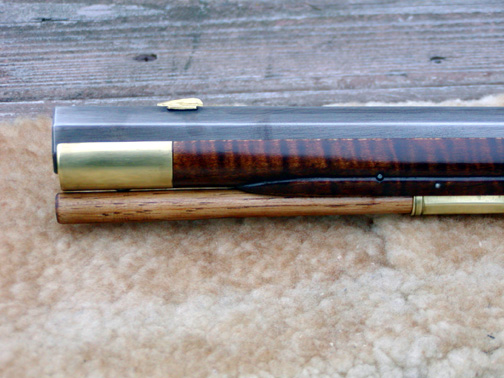- Joined
- Dec 5, 2018
- Messages
- 10
- Reaction score
- 4
Needing some feedback. Building another Kibler Colonial rifle and was thinking of not rust browning the barrel. Thinking of leaving it in the white. Any thoughts in keeping with authenticity.




I hunt with my muzzleloaders so no way I'm taking an in the white gun deer or turkey hunting. They'd spot it a mile away.



I just don’t think they scared off too much game or alerted too many Indians.
Naval jelly seem like the way I’m leaning now. I rust browned my last Kibler kit. Looks awesome. Wanted something different.
You could be right, I let my brass tarnish naturally, hasn’t seemed to scare much game. I guess the same could be said for factory white barrel, that it soon would be gray and no doubt some faint brown patches pretty quick in the field.I'm not so sure about that.
Almost anything that shines in the woods is foreign to the woods and that will give one away to Turkeys and other humans, at least. It can also be surprising how far away the reflected shine will give one away. While it is true that movement more often gives one away than anything, it is mainly because that was/is more common than light hitting the surface and reflecting off shiny parts.
I know I have read where frontiersmen in the 18th and 19th centuries deliberately rubbed various plants on the shiny brass parts of their new rifles/guns to begin the corrosion process and stop the easily reflected light from shiny brass parts. Of course the problem is I don't remember where I read it, since it made so much sense when I read it.
Further, having many years experience having to shine brass in the military, I also know that within a few days to a week or so, shiny brass loses its shine and thus won't easily reflect light in the woods or frontier. Since I doubt almost anyone on the frontier worried that much (if at all) about shining the brass parts of their guns, it would not be long before the brass naturally dulled enough not to be a problem. Once the brass parts dulled naturally, then no problem on them reflecting light in most cases.
Gus
THEN after degreasing, I applied a layer of yellow mustard. The mustard gives you the ability to judge the thickness and consistency of the layer applied. Then as it dries, the vinegar stains the metal, giving it a patina, and the mustard goes from yellow to brown as it dries. I knock it off with a tooth brush, maybe add some water if it's tenacious, and repeat. When done I leave it as is, or "polish it back" some. The military musket barrels do especially well, and when polished with oil and 220 grit emory paper, get gun metal gray. with darker areas in the hard to reach spots.
LD
Enter your email address to join: